This ex-Facebook engineer built an app that simplifies WhatsApp ordering for small businesses
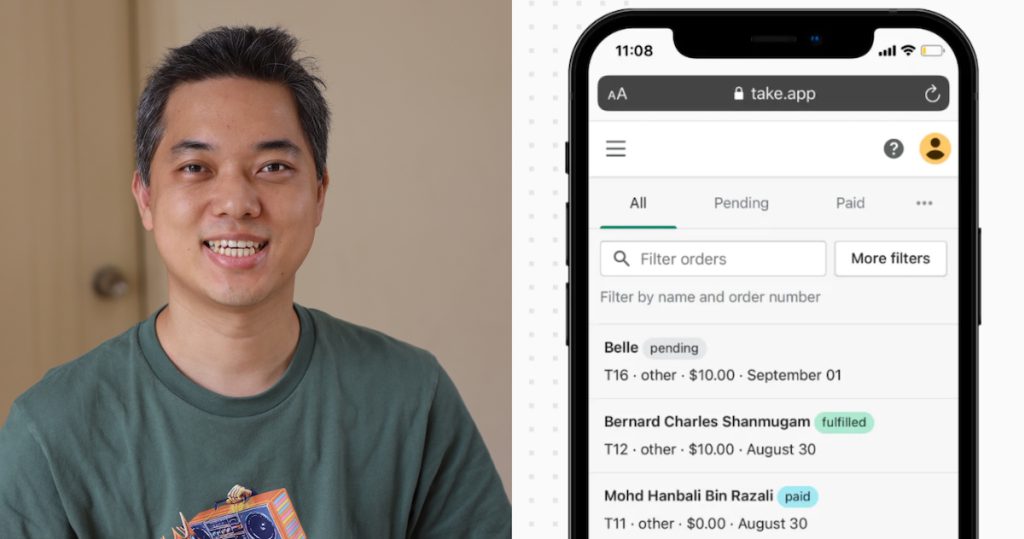
In today’s fast-paced world, consumers expect speed, convenience, and efficiency in their day-to-day activities. Ordering food online is no exception.
However, not all businesses can afford to invest in expensive e-commerce platforms or have the technical expertise to set up an online ordering system. That’s where Take App comes in.
It was founded in 2020 by Kim Youmin, who studied computer engineering in South Korea.
His first job was as a software engineer at LG Electronics and he later moved to Singapore to work as an engineer at Facebook (now Meta). He left the company in 2021, but during his time there, his team launched several commerce products in Southeast Asia, including Marketplace and Instagram Shopping.
An idea born during the COVID pandemic
Take App is an online ordering platform that helps small businesses streamline their ordering process through WhatsApp.
The idea first came to Youmin when he was ordering food from neighbouring restaurants and Facebook groups using WhatsApp during the COVID-19 lockdown. The ordering process was inefficient, and the owners had to manually respond to and track many WhatsApp conversations.
As such, Take App was born out of the need to make the process more efficient, and Youmin set out to create an online order form that focuses on WhatsApp ordering.
I was inspired by Chinese dim sum restaurants that ask customers to fill in an item quantity form and later confirm orders. With our order form, customers can choose what they want without having to ask the owners questions.
The owner receives the order details via WhatsApp and settles payments and delivery through WhatsApp conversations. This makes the ordering process significantly efficient and helps small businesses with a digital gap.
– Kim Youmin, founder of Take App
To cater to business owners who may not be well-versed in technology, Youmin developed Take App with a user-friendly interface. The platform leverages the use of online menu websites and WhatsApp, eliminating the need for any app installations or complicated settings.
In June 2022, the startup closed a seed funding round that was led by Y Combinator’s Winter 22 batch. Y Combinator, Meta, and an undisclosed list of angels invested US$1 million in the company.
It started out as a non-profit venture
Initially starting as a nonprofit to assist small restaurants in Singapore in accepting online orders, Kim discovered a significant opportunity to turn Take App into a commercial venture.
In the early days of Take App, Youmin manually created order forms for a few restaurant owners who consistently uploaded their food options to Facebook groups. He shared the order form links in their Facebook group posts as comments and encouraged customers to use them to save time for the owners.
The response was positive, and many people started using the order forms through word-of-mouth in the community. In just three months, Take App reached 200,000 website visitors per month.
However, one of the key challenges Take App faced is serving customers who are not tech-savvy and less committed to the platform.
We overcome this challenge by doubling down on WhatsApp ordering, which is free, flexible, immediate, and economically efficient. Our customers can chat directly with their end customers on WhatsApp without a middleman, which saves money as there is no commission involved.
Although we may lose some merchants who need standard e-commerce services, we focus on building global products for WhatsApp ordering instead.
– Kim Youmin, founder of Take App
Last year, Take App also helps businesses in retaining customers by keeping a database and providing assistance in creating and sending newsletters, similar to a “Mailchimp for WhatsApp.” These newsletters may contain exclusive offers or relevant updates about the company to entice customers to return.
Since its launch, TakeApp has seen consistent growth. When restrictions were lifted in 2021, website traffic dropped by 30 per cent, but the core merchants did not experience major churn as many customers still prefer using WhatsApp ordering.
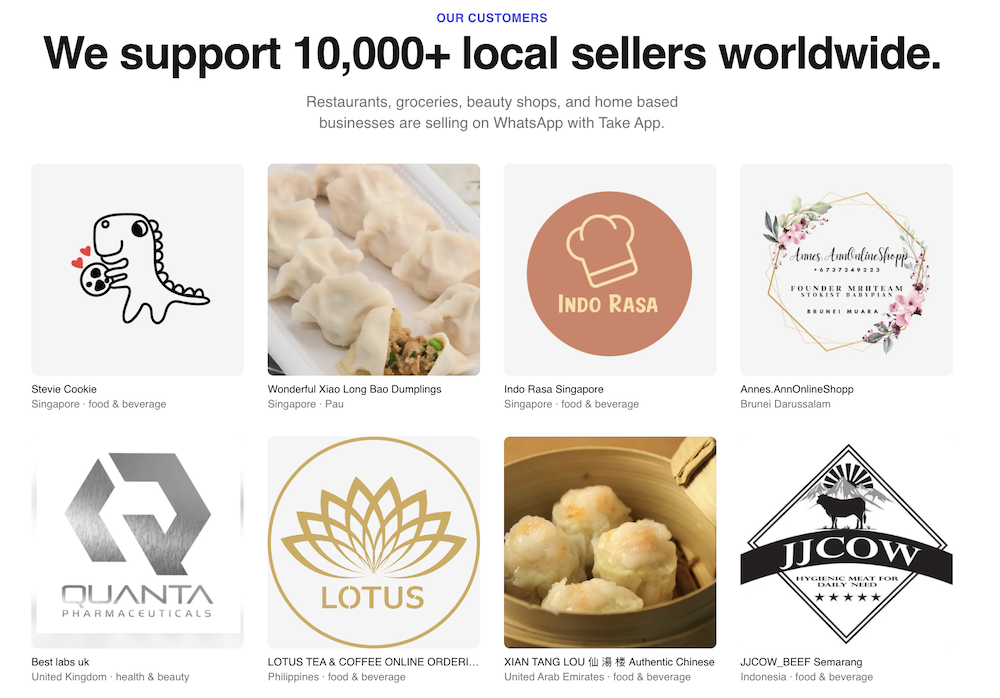
Today, Take App has over 20,000 merchants and paid customers from more than 30 countries and is an official WhatsApp Business Solution provider. Apart from restaurants, Take App also caters to other businesses such as bakeries, grocery stores, and beauty salons.
The rise of WhatsApp bots
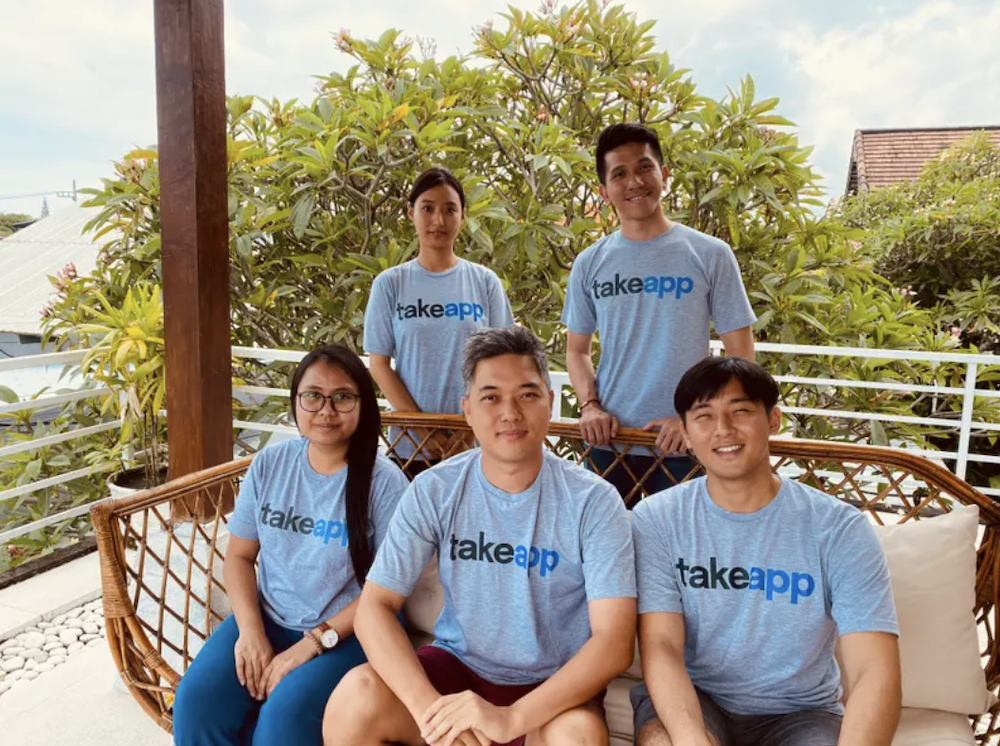
The company’s focus is on end-to-end automation of WhatsApp customer support. This is a major pain point for the merchant community due to high labour costs.
Take App plans to expand its product line to include general customer support such as Q&A and table reservation, allowing merchants to reduce labour costs by using WhatsApp bots.
We already use a WhatsApp bot in our customer support, and people usually don’t even realise it’s a bot. We believe that hiring a WhatsApp bot for customer support will become as commonplace as hiring a human customer support staff member.
– Kim Youmin, founder of Take App
Take App’s artificial intelligence (AI) technology generates natural conversations, enabling merchants to adapt their tone and knowledge in conversations.
For example, the bot can ask a merchant, “A group of four people wants to walk-in in five minutes. Should we accept the booking?” Upon receiving a “Yes” response, the bot confirms the booking and guides the customers, ultimately saving valuable time compared to manual conversations.
The product is currently in closed beta with more than 10 merchants, and Take App plans to launch it publicly later this year.
Featured Image Credit: Take App
Also Read: From S’pore to NYC: This S’pore hawkerpreneur is putting his charcoal burgers on the world map
Famous TTDI Ramadhan bazaar goes full-on cashless this year, here are the details
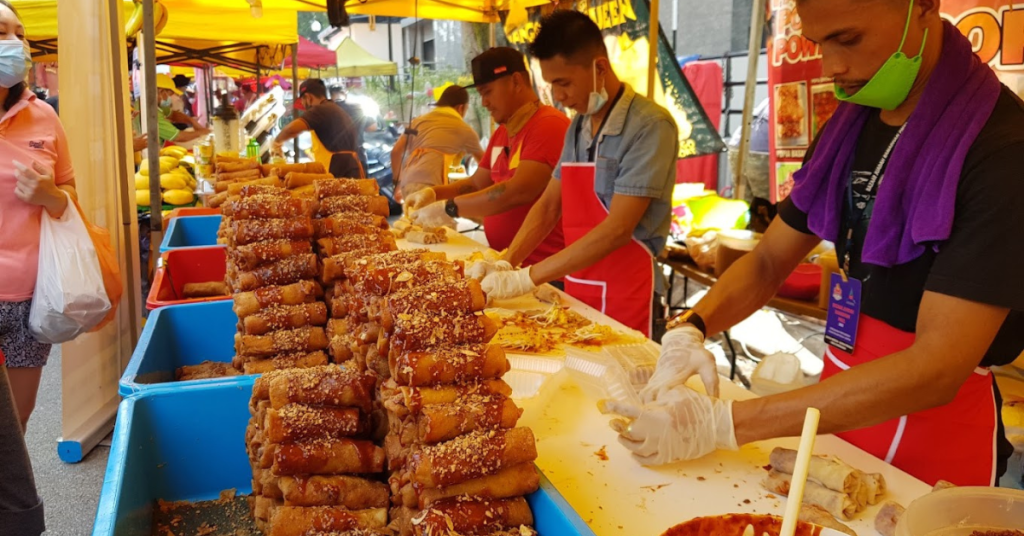
The famous TTDI Ramadhan bazaar is back and embracing the cashless movement full-on this year.
Tech Hunter announced that they’re collaborating with the Ramadhan bazaar to transform the annual month-long event into a digital bazaar.
The IT-based tech company is providing every stall at the TTDI Ramadhan bazaar with payment terminals to make this possible.
The bazaar had previously been known to support cashless transactions through Touch ‘n Go eWallet and the Boost app. But this year, shoppers can enjoy multiple cashless ways to make breaking fast easier.
Instead of carrying around a thick wallet of cash, visitors can now make purchases using debit cards, credit cards, e-wallets, or QR codes. This makes shopping in the crowded bazaar less of a hassle, and perhaps safer too.
For those who still prefer to deal with cold hard cash though, you’ll be glad to know that this is still an option at the bazaar too.

Some of the more distinct food items that visitors of the bazaar can expect to see are cheeseburgers, kambing bakar, and popiah from the popular Pakya Popia Power stall.
Other popular Ramadhan bazaar staples like murtabak, apam balik, satay, and otak-otak are also available at various stalls.
This collaboration is just one of Tech Hunter’s initiatives to accelerate cashless programmes across various industries in Malaysia.
According to Tech Hunter’s website, the brand typically collaborates with F&B, hotels, fashion stores, travel agencies, property companies, and SMEs.
They’re currently in partnership with Visa, Mastercard, Maybank QRPay, and Touch ‘n Go eWallet, among other fintech platforms.
Also Read: Navigate hybrid work’s pain points like productivity & security issues via this webinar
Featured Image Credit: Monika Karlińska on Google Maps
Did Mentega Terbang actually violate any film guidelines in M’sia? We investigate.

Recently, Mentega Terbang has been making waves in the news.
Not for breaking any records upon its release in 2021 though. Instead, it’s because some have (including the governmental media bodies) deemed it to be controversial.
But the question is, is Mentega Terbang really violating any film guidelines in Malaysia?
Before jumping into that, we have to look into the local film landscape and understand how movies get released on the big screen.
A brief introduction to the film industry
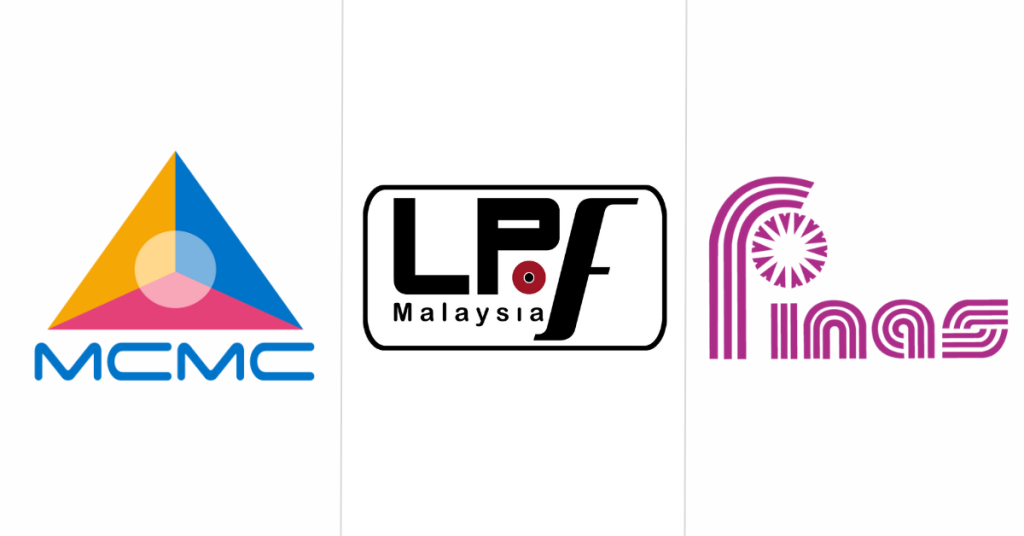
The filmmaking industry in Malaysia is quite complicated, as there are many different governmental bodies involved.
Some of the major players include the Malaysian Communications and Multimedia Commission (MCMC), the Film Censorship Board of Malaysia (LPF), and the National Film Development Corporation Malaysia (FINAS).
A lot of times, people tend to confuse the roles of these organisations, so let us break it down for you:
| Organisation | Role |
|---|---|
| MCMC | Regulate the communications and multimedia industry based on the powers provided for in the Malaysian Communications and Multimedia Commission Act (1998) and the Communications and Multimedia Act (1998). |
| LPF | To implement policies for film censorship and censoring films all across Malaysia. The first Act adopted was the Cinematograph Films Act 1952 (Amendment 1966), followed by the Film Censorship Act 2002 (Act 620) which is in force until today. |
| FINAS | To encourage, preserve, and facilitate the progress of the film industry in Malaysia. Generally provides assistance to entrepreneurs and industry participants in terms of encouragement, training, financial assistance, production facilities, or advisory services. |
Now that this is clarified, the bigger question is…
How do films or TV shows get aired in Malaysia?
From Vulcan Post’s research, we found that there are two main policies used to assess this—the Film Censorship Act 2002 (FCA) and the Guidelines on Film Censorship.
The FCA states that all films, motion pictures, and moving images that will be publicly screened need prior vetting. This also includes trailers and advertisements.
And according to FREEDOM Film Network, possessing, distributing, or exhibiting any film without the proper licence is a criminal offence.
If caught, you could get charged with a fine of RM5,000 to RM30,000 and/or imprisonment for up to three years.
The organisation that is in charge of approving, censoring, and classifying films is LPF, which is under the Home Ministry as it deals with internal affairs.
So just to reiterate, FINAS doesn’t really have a say in it, as many Malaysians have been misled to believe.
Now, back to the topic
In order to get a media material approved, production houses need to apply for a film certification from LPF. The application process can be quite complicated, but here’s a simple graph to help make it easier:
There’s a long list of factors that are considered during the appraisal, as stated in the Guidelines on Film Censorship.
But essentially it focuses on four main areas—security and public order, religion, socio-culture, and decorum and morality.
It’s a lot to unpack there, so the guideline also includes a list of the kinds of films that generally don’t get approved:
| 1) Films that have a theme, storyline, or plot contrary to socio-culture, noble values, are seditious, anti-religious, insults the beliefs or customs of a particular community or group, have elements that contradict the policies of the government, excessive violence, and cruelty. |
| 2) Films that have an illogical theme, storyline, or plot that may lead the citizens astray and cause foreign countries to have a poor perception of the socio- culture and noble values of the local population. |
| 3) Films must respect Malaysia as a sovereign nation. Films that don’t but instead condemn Malaysia, smear the good name and image of the country and its people, contravene decorum and Rukun Negara (even if it is produced outside the country) are not approved. |
That said, there are exceptions…
This “pre-approval” process is not necessary for other media, such as print, visual, performing arts, and anything on the internet.
This means that your TikTok clips, Instagram photos, YouTube videos, and independent films don’t have to be vetted by LPF before publication.
Really?
Well, the organisation itself told The Star that it only screens films and related publicity material that will be published conventionally, which does not include online materials.
In fact, none of the organisations mentioned above have jurisdiction over what does or does not get to be published online. Not MCMC, not LPF, and not FINAS.
So why did the recent controversy surrounding Mentega Terbang, an acclaimed independent film screened solely online, happen?
And more importantly, how does MCMC play a role in it?
Let’s rewind to the start
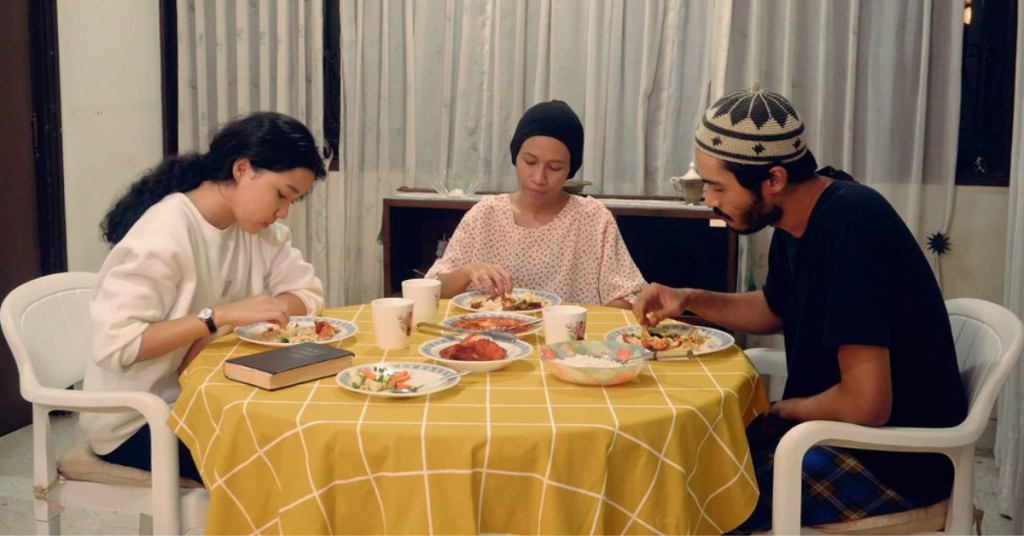
Mentega Terbang is a slice-of-life film about 15-year-old Aisyah and her exploration of faith and the afterlife following her mother’s declining health.
It touches on various differences and similarities that the major religions in Malaysia share. Not a topic most local films would go near, since religion itself is quite a sensitive matter.
The film had been screening underground for the past two years (released in 2021), despite being showcased at the Indonesian Jogja-NETPAC Asian Film Festival in 2021 and the 2022 Aceh Film Festival.
That is, until Asian streaming platform Viu decided to onboard the film on January 19, 2023.
The film’s co-producer, Tan Meng Kheng, said in a statement that the initial audience reception was overwhelmingly positive. But that all changed when MCMC stepped in and requested Viu to take the film down.
Speaking to Free Malaysia Today, the commission admitted that although they had no authority as the film did not fall under its purview, it contacted Viu on the matter.
The reason? “The MCMC will always cooperate and provide technical support to the state religious department to conduct investigations under the Shariah Criminal Offences Act,” MCMC said.
So the movie was effectively taken down on February 27, 2023.
But the drama is just beginning

Certain scenes of the movie started circulating on social media, which caused some public outrage. Some netizens deemed it offensive to Islam and questioned how the film was allowed for public viewing.
The police were also brought into the picture. After receiving eight reports, a case was lodged against the producer. The charges are as follows:
- Section 298A of the Penal Code for causing disharmony
- Section 505(b) of the Penal Code for causing public fear, or distress public tranquillity
- Section 233 of the Communications and Multimedia Act 1998 for improper use of network facilities
More recently though, two cars belonging to the film’s director and screenwriter were reportedly splashed with paint and acid on March 16, 2023.
The perpetrators also left death threats on the vandalised cars, stating “You and your family must die”, “Mentega Terbang don’t challenge Islam” and “Remember (this) Mentega Terbang family”.
Having watched the movie, it’s understandable how it might rub off the wrong way. But committing personal crimes like these isn’t the civilised way to express your dissatisfaction and call for change.
Not the first controversial Malaysian film
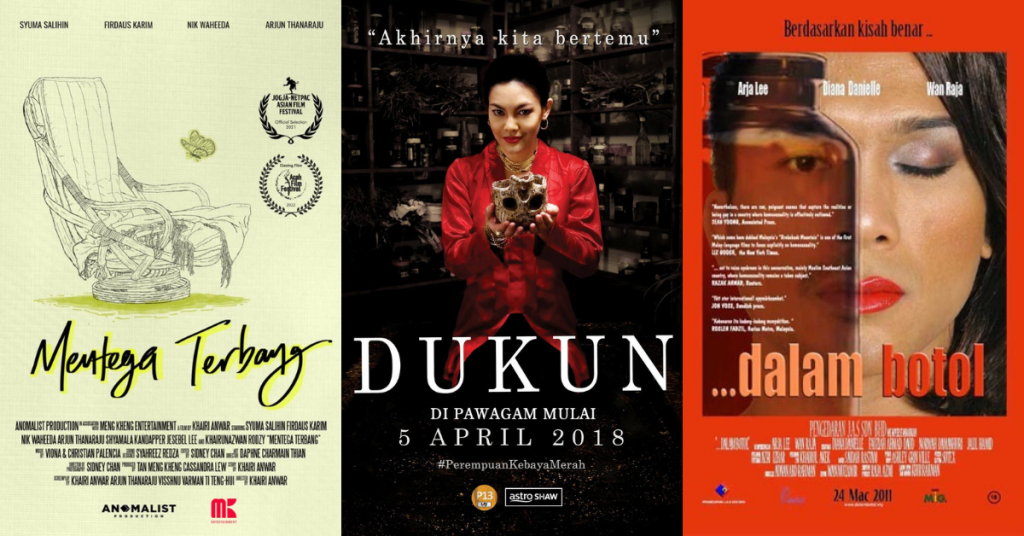
“Dukun”, which chronicles the sensationalised true story of Datuk Mazlan Idris’ murder at the hands of Mona Fandey, failed to receive approval for its release in 2007.
Some concerns surrounding the movie at the time included its depiction of violence, superstition, and infringement upon the sensitivities of certain parties.
It was reported that no official statement was given to explain the issue. However, the movie was allowed to premiere 10 years later.
Similarly, “….Dalam Botol” tells the fictional story of a Malay man who underwent surgery to become a transgender woman. The plot also had homosexual elements.
That itself was a cause for concern for many as the homosexual themes were (and still remain) a taboo in Malaysia, including its film industry.
But it managed to get the green light from LPF after making some amendments, and was released in 2011.
Both of these are box office movies. The Vulcan Post team tried to find independent films with the same scale of controversy, but came up empty-handed as they’re quite obscure.
Had we found other similar case studies though, it would’ve been interesting to see how the controversies were handled, and what became of the independent films in the aftermath.
All that said, any constructive criticism should be welcomed, if the goal is to improve something. But are the death threats and property damage toward Mentega Terbang’s team truly constructive?
The authorities also should not jump the gun to censor materials at the first sight of public unrest over something. The proper SOPs should still be practised, and action must be taken through the right channels. Would such swift action have been taken if the movie hadn’t gone viral?
- Learn more about Mentega Terbang here.
- Read other articles we’ve written about Malaysian startups here.
Also Read: Planning an event in KL? These 5 factors will ensure your venue can cover your bases.
Featured Image Creidt: Mentega Terbang
From S’pore to NYC: This S’pore hawkerpreneur is putting his charcoal burgers on the world map
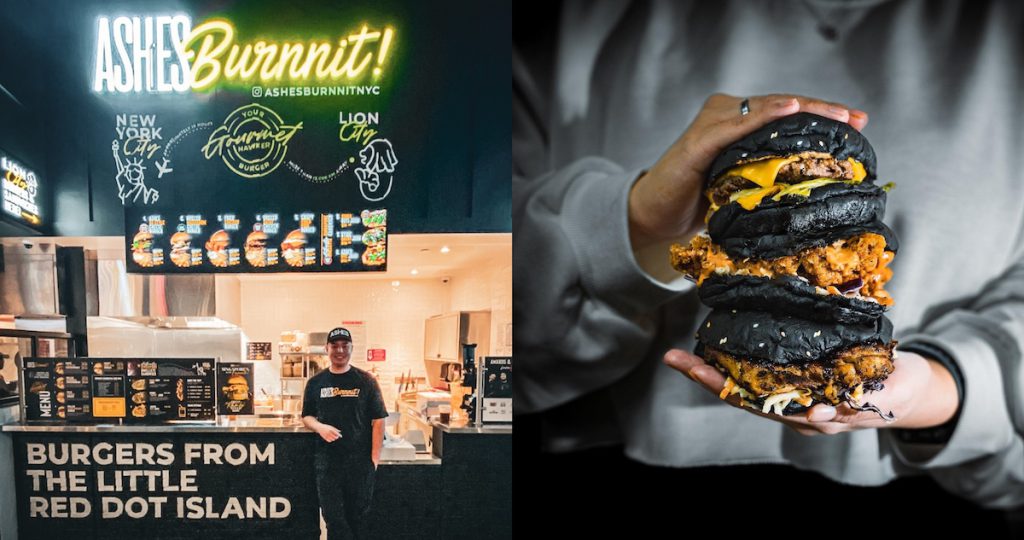
It’s often said that when one door closes, another opens — this sentiment couldn’t ring more true for Syafiq Lee.
When he left Burgs by Project Warung, a gourmet burger brand that he co-founded back in 2017, he didn’t just pack up and leave the burger scene behind. Instead, he took a bold leap of faith and started a new venture AshesBurnnit, which officially launched in September 2019.
“When I decided to separate from [Burgs], I knew I had to do something different instead of the regular burgers. So I thought why not try out charcoal buns, since it wasn’t that popular back then,” the 31-year-old told Vulcan Post over a video interview.
The idea was simple: to infuse charcoal into the burger buns, giving them a distinctive black colour while still retaining the softness and texture of regular buns.
He is also not worried if Burgs views them as competition, because they adopt different business models — Burgs is moving into malls, while AshesBurnnit is focused on coffeeshops and hawker stalls.
Over the pandemic-stricken years, his burger business has steadily grown its footprint, and currently has five stalls in Singapore and one in New York City.
Starting from scratch amid COVID-19
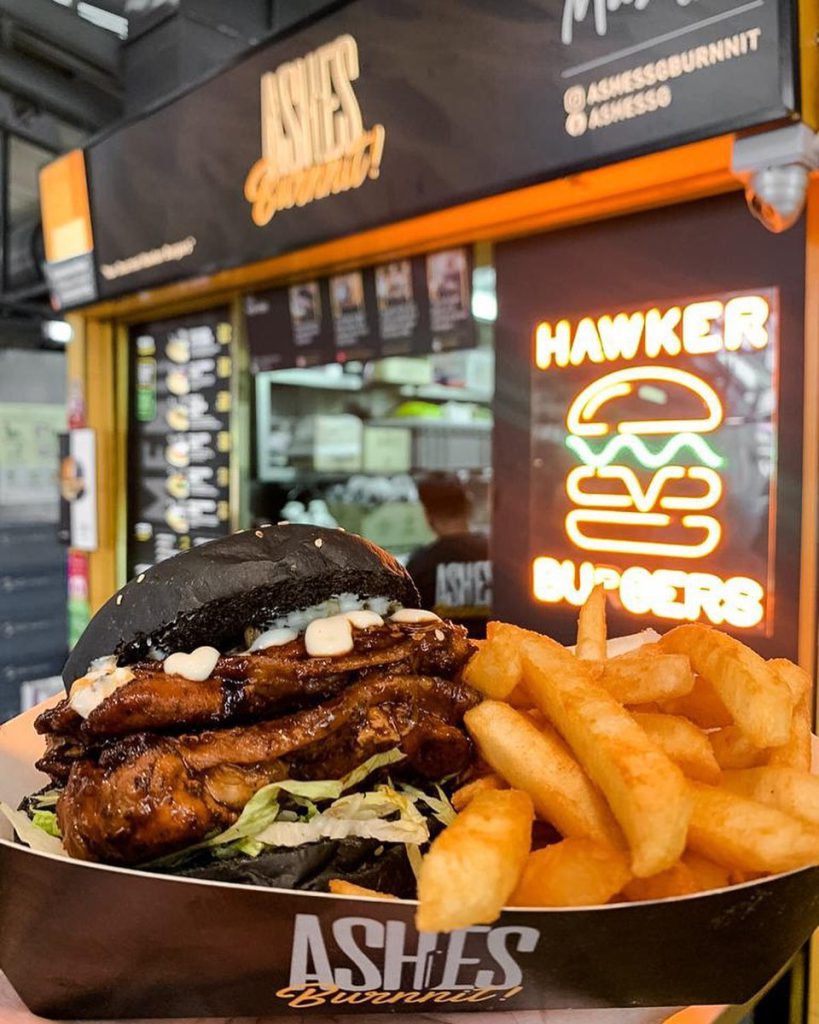
Just a few months after he launched AshesBurnnit, it was the onset of COVID-19. The first six months of the pandemic were tough, especially for a new business like his.
Syafiq had just started the rebranding process and were just beginning to build a pool of customers when the pandemic hit Singapore. Restaurants and cafes were forced to close, and only hawkers were allowed to operate, which turned out to be a blessing in disguise for them.
During this period, the brand ramped up its social media marketing efforts and rolled out islandwide deliveries, allowing more people to try their food. This helped to boost revenue during the pandemic and gain popularity at the same time.
Syafiq and his team also worked with freelance delivery riders who had lost their jobs due to the pandemic. They charged S$10 to S$15 per delivery, and all the fees went directly to the riders. This was a win-win situation for both parties, as AshesBurnnit was able to provide delivery services to its customers while also supporting the community during a difficult time.
Beyond in-house deliveries, they also jumped onboard new, small-scale food delivery platforms, which emerged during COVID-19 to help smaller F&B players.
Although COVID restrictions have already eased, Syafiq said that they still continue to witness high delivery orders.
Back then, our stall would see 90 per cent walk-ins and 10 per cent deliveries. Post-COVID, the ratio is now 60-40 or 50-50 on average. This affects our [bottomline greatly] because we pay commission fees to the delivery platforms. The higher the commission fees, the lesser profits [we earn].
– Syafiq Lee, founder of AshesBurnnit
Another challenge that Syafiq faced was building a customer base from scratch.
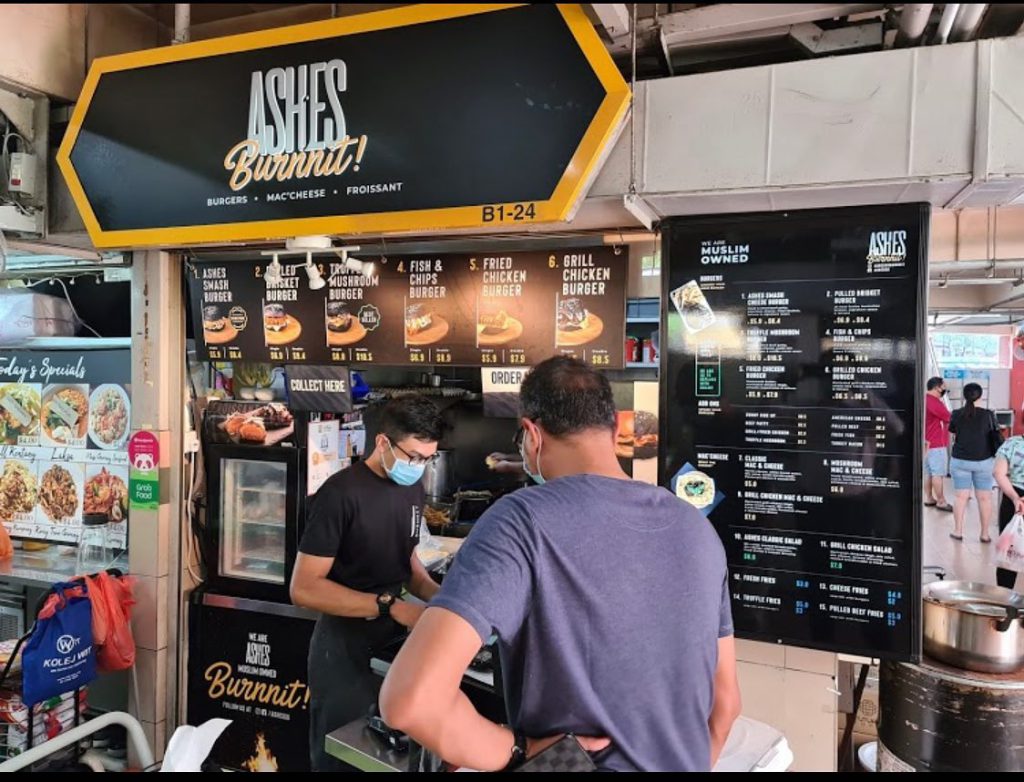
The first AshesBurnnit stall was actually located in the exact same location as Burgs’ stall at Golden Mile Food Centre. Syafiq took over the stall because it was under his name and revamped everything — from changing the menu to stall settings.
It was a strategic move because the stall already had a lot of foot traffic, but they had to work hard to build up their own customer base because people were used to seeing Burgs there. Some people were also unsure if they should try AshesBurnnit out because they were unfamiliar with charcoal buns.
“We had to educate our customers on the benefits of charcoal buns,” Syafiq said. “A lot of people were skeptical at first because they weren’t familiar with the idea. But we explained to them that charcoal buns are actually much healthier than regular buns, and there’s no difference in terms of taste.”
Fast forward to today, Syafiq claims that AshesBurnnit is recognised everywhere by their signature charcoal buns.
The inflation challenge is real for F&B entrepeneurs
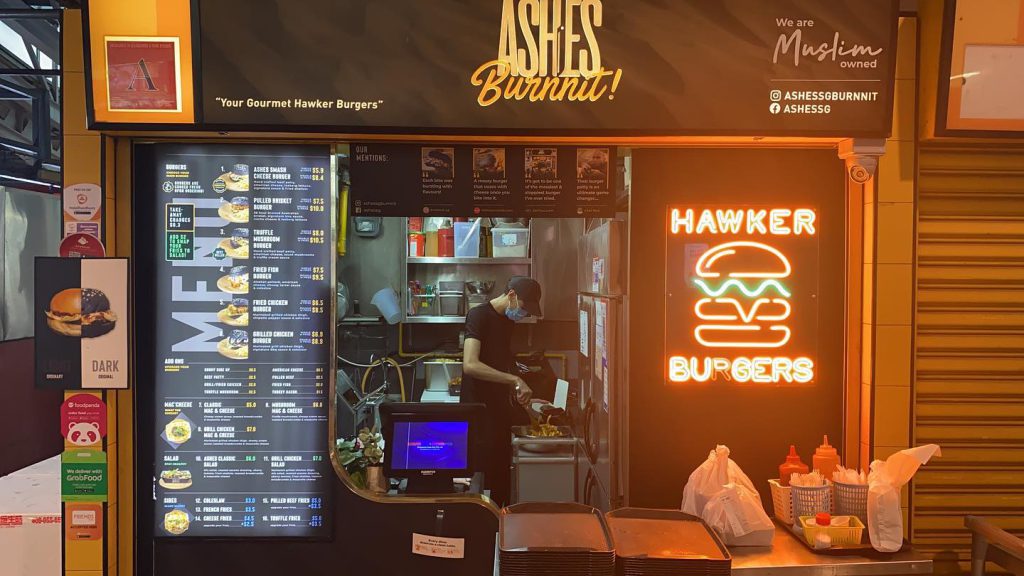
Since its first outlet in Golden Mile, Ashesburnnit has opened four more outlets in Singapore — at Alexandra Village Food Centre, Bedok South, Teck Whye Lane, and Woodlands North Plaza.
The company’s fast expansion is attributed to its ability to identify its customers’ needs through delivery orders, which helped it determine the areas where the majority of its customers are located.
Instead of opening outlets in prime locations, AshesBurnnit opted for heartland areas where its customers are concentrated. “Instead of them going to us, we actually go to them,” he quipped.
While the brand typically opens one to two outlets each year, it has decided to hold back on its expansion plans due to the recent inflation.
The cost of goods has increased, and the company is struggling to remain affordable as they continue to aim for the masses.
We recently increased our prices by S$0.50 to S$1 in January 2023, although the cost of goods increased way back in October last year. Suppliers don’t increase the cost by up to S$1, they actually increase prices by S$3 to S$4 on average, per carton.
Even after we increased our prices at the start of this year, the cost has gone up again. It’s like a [catch-22 situation] — it’s a never-ending game of increment and for us, being in hawker centres and coffee shops, there’s a limit in terms of price point. Nobody is going to pay more than S$10.
– Syafiq Lee, founder of AshesBurnnit
Despite the challenges, Ashesburnnit remains profitable and still able to absorb some of the inflationary costs, although they are not earning as much as before due to increased expenditure and a more diffused customer base.
Spreading their wings to New York
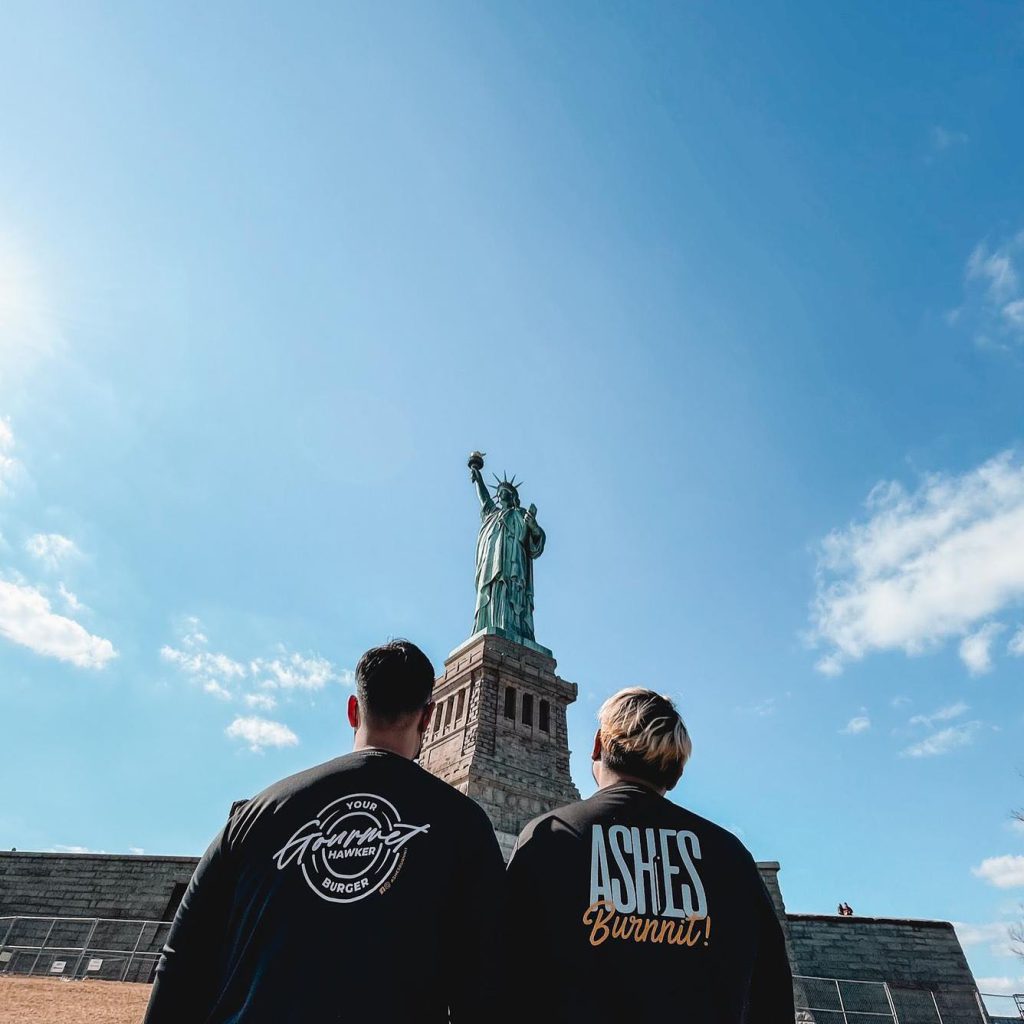
Beyond Singapore, AshesBurnnit recently opened its first overseas outlet in New York City, which is located just two streets away from tourist hotspot Time Square.
When asked about what triggered the expansion to New York, Syafiq shares that the idea was to serve Singapore-style burgers to the “capital of burgers”.
He added that their satay chicken burger was an instant hit, and they also introduced their charcoal ‘roti John’, which did very well too. Additionally, he wanted to show New Yorkers that burgers are also a staple food in Singapore.
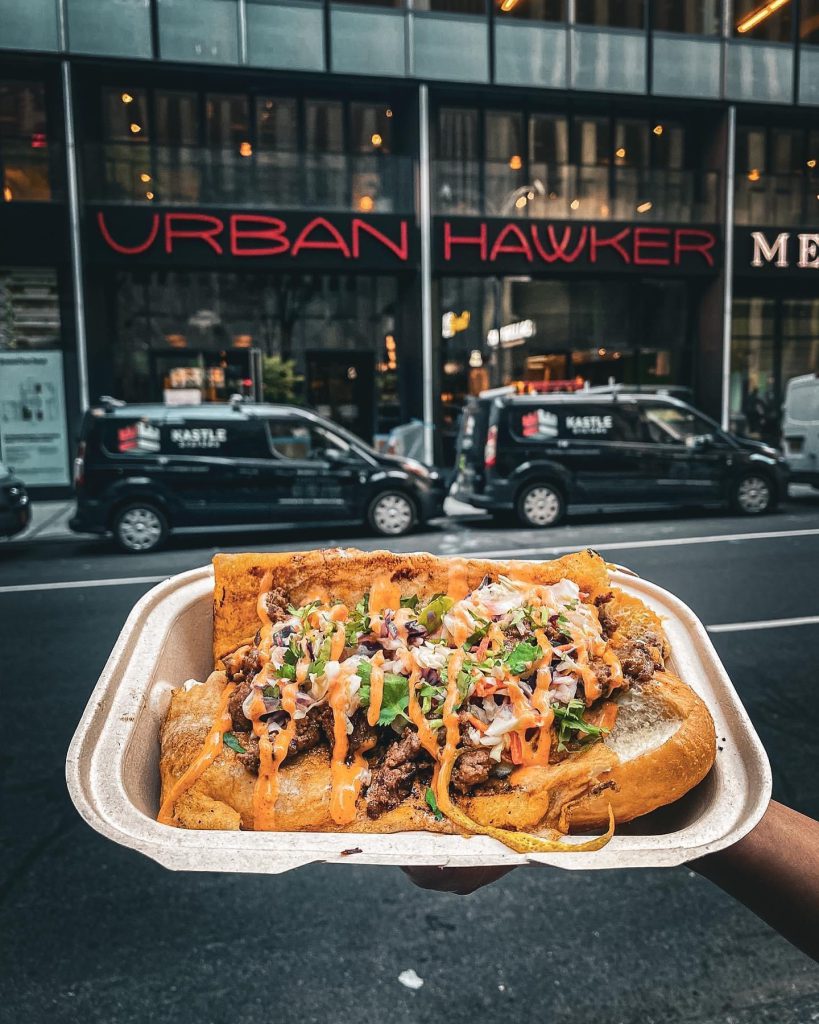
The opportunity to open a store in New York came through the Urban Hawker, a New York-based hawker centre that is the brainchild of KF Seetoh from Makansutra.
Seetoh had invited a couple of local hawkers to go abroad after doing a round of food tasting to make his selection, and has a vision to spotlight young ‘hawkerpreneurs’ and help them expand overseas.
Syafiq shared that it is a goal for all of them to show people that even hawkers can make a mark globally. Personally for him, he wants to encourage the younger generation to join the hawker trade, and hope to be an inspiration for people to follow.
However, Syafiq admitted that he had a lot of concerns before taking the leap to expand to New York. He shares that setting up a company there is a “new world” for him, and he had to learn a lot of things such as taxation, filing, connecting to halal suppliers, and acquiring new equipment.
He also had to pump in a significant amount of capital — and the currency has shifted from SGD to USD, resulting in increased costs due to the conversion rate.
It’s 60 per cent more expensive [to set up shop there]. In Singapore, you need S$30,000 on average but in New York, you need at least US$70,000 to US$80,000.
Some people might question why we chose to open up someplace halfway around the world instead of [sticking to somewhere regional] in Asia. But as a young entrepreneur, I’m not afraid to take risks. If you never try, you never know!
– Syafiq Lee, founder of AshesBurnnit
In the days leading up to the New York outlet opening, Syafiq shared that he had a lot of help from Seetoh, Urban Hawker and Enterprise Singapore, which had a branch there.
They passed him a list of relevant contacts, and he also travelled to New York to settle the business, spending half a year there across four different trips. It was challenging, but he believed that the opportunity was too good to let it slip away.
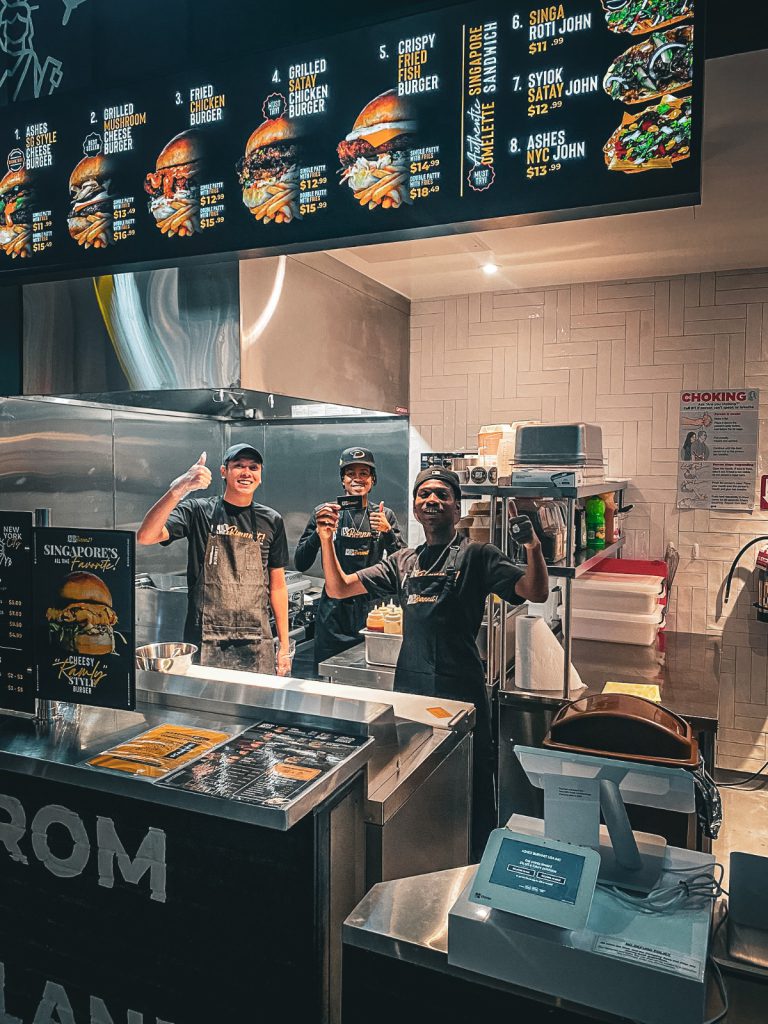
According to him, the business in New York has been fantastic. The first three months of operations were “crazy” thanks to extensive media coverage — they were featured as one of the top 10 burger places in a New York publication.
He added that AshesBurnnit in New York has achieved a high six-figure monthly revenue within just a few months of operation. Meanwhile, in Singapore, they are earning around five figures on average per outlet and hitting six figures per month across the whole company.
Following this good traction, people are approaching Syafiq with expansion opportunities. Some have offered franchise business opportunities, while others have proposed a partnership basis, where they fund the capital, and AshesBurnnit operates outlets for them.
Urban Hawker also has plans to operate a similar concept somewhere else in the US. AshesBurnnit was one of the first businesses to be approached, and this marks the possibility of them opening a second outlet in the US.
“The beauty of the US is that there are so many states that we can enter and we won’t have an overlapping customer base. In contrast, Singapore is so small that we have the same customers visiting different outlets,” he added.
Paving the way for younger entrepreneurs
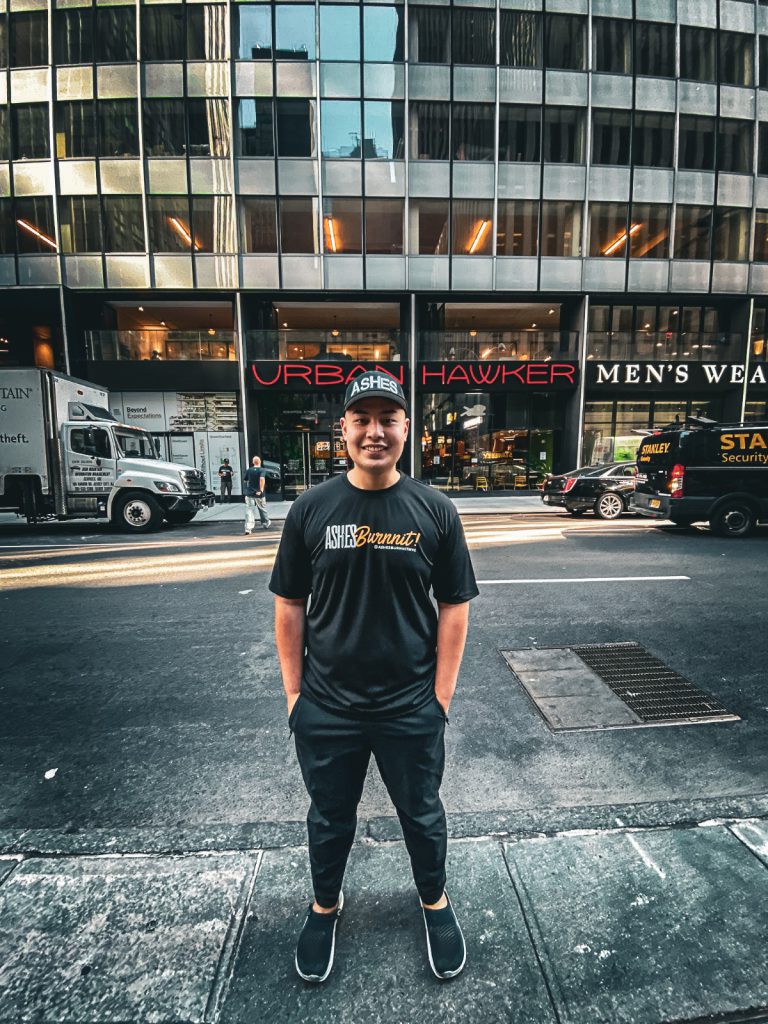
Recounting his entrepreneurial journey thus far, Syafiq stressed that starting a business is never easy.
He talked about the various “walls” or challenges he had to face, particularly learning the nuances of running a hawker stall — this includes figuring out how to operate a hawker stall, deciding on the menu, setting up the stall, and determining how much capital to invest.
He noted that when he asked their business neighbours for advice, they refused to disclose specific information. Understanding this frustration firsthand, Syafiq hopes to pave the way for next-generation entrepreneurs to have an easier time in starting their own ventures.
He believes that young hawkers can learn a lot from AshesBurnnit about the ins and outs of the business, and now, they are equipped to also impart their knowledge on overseas expansion.
When asked about his strategy to outlast in the competitive F&B industry, Syafiq emphasised the importance of food quality and innovation. Due to the fact that the F&B landscape is constantly evolving, it is crucial to stay ahead to the curve to remain relevant.
To this end, he launched a sister brand of AshesBurnnit called Sembarang Nasi Lemak in late 2022. The recipe for Sembarang Nasi Lemak is inherited from Syafiq’s grandmother, which is uniquely cooked with ghee.
Syafiq noted that Sembarang Nasi Lemak is the first time that AshesBurnnit has ventured out of the hawker setting and into a cafe setting. Much like AshesBurnnit, Syafiq plans to ramp up expansion for this new F&B brand.
He is planning to open the next Sembarang Nasi Lemak outlet in a hawker or coffee shop setting, taking inspiration from how CRAVE Nasi Lemak and Boon Lay Power Nasi Lemak expand their businesses.
Looking further ahead, Syafiq hopes to eventually open a standalone outlet for AshesBurnnit with a more diversified menu. He envisions the concept as fast food with a local twist, which he believes will resonate with customers.
For now, he hopes to open or two more AshesBurnnit outlets in the coming months, particularly eyeing the East and North East areas of Singapore. He is currently “monitoring the situation” and will decide where to go next in the second half of the year.
Featured Image Credit: AshesBurnnit
Also Read: These 3 S’poreans Quit Being Restaurant Chefs To Bring Affordable Gourmet Burgers To Hawker Centres
F.timber: The never-before-known story of the M’sian bag brand launched in 1995

Over the years, I’ve often come across a bag brand called F.timber, typically in department stores such as Parkson. Recently, though, the brand has been popping up on my social media feed too. Curious, I decided to look it up.
However, upon doing so, I realised there wasn’t much about it online. Other than the brand being established in 1995, I had no idea about who founded it and what its growth story was.
Considering its elusiveness, I didn’t expect to receive a prompt response from its director when messaging F.timber’s Instagram page. Yet, that’s exactly what happened.
A new generation
Introducing herself as Christine, I later learnt that this director is actually the daughter of the founders, Richard and Nancy.
According to Christine, her dad travelled excessively when setting up F.timber to source products ranging from women’s handbags to school bags and even men’s accessories.
“With his strong determination and through trial and error, he built this company from scratch,” the daughter proudly shared.
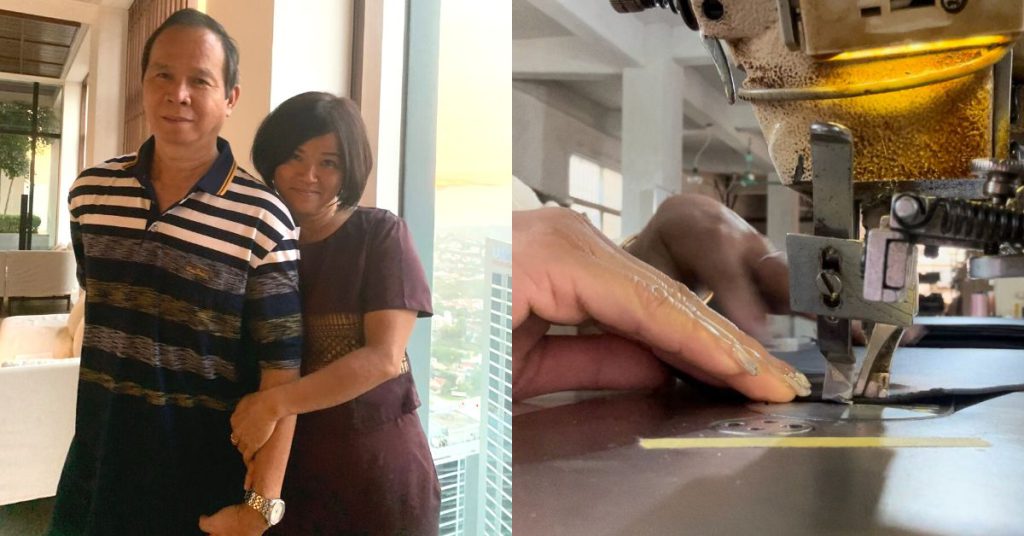
A few years after its inception, Christine’s mother joined. The brand F.timber’s name actually comes from her mum’s love for nature. F.timber originally was Forest Timber, after all. According to Christine, many customers still remember them by the original Forest Timber name.
Back then, they were given an opportunity to have a short-term consignment at Sogo KL, a popular department store. As a short-term agreement, though, once the promotion ended, they would need to pack up and leave.
But things must have worked out, because Christine shared that at one point, the business was operating more than 50 outlets nationwide. She recalled her parents working hard every single day to ensure their business was on the right track.
“Back then, I dreaded school holidays and weekends because it meant helping out in the warehouse work,” she explained. “I’d rather be at school!”
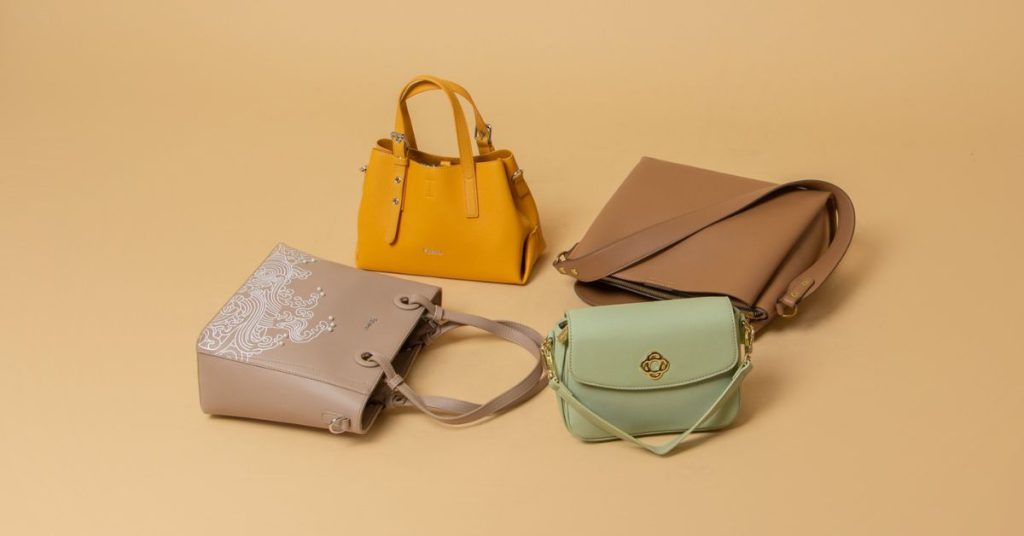
“I remember vividly if we needed to make deliveries of products to stores on weekends we had to sneak into the stores at customers’ entrances (illegally) because the loading bays were closed during the weekends. It was very tense work and a lot of perseverance,” she also revealed.
Things have changed a lot, though. At just 21, Christine decided to join the company as an executive. Now 30 years old, she’s the director of the company.
“My parents decided to retire earlier last year; good for them,” she said. “They totally deserve it.”
A competitive industry
Back when F.timber first got its start, there were already a few notable bag brands locally. However, the brand believes it managed to set itself apart by focusing on delivering affordable luxury to its customers.
“We want everyone to possess amazing quality products without burning a hole in their pockets,” Christine summarised.
According to Christine, the brand had minimum marketing efforts then, relying simply on the word of mouth of loyal customers.

Today, F.timber still preaches the same ethos of providing affordable luxury to Malaysians, though its marketing tactics may have changed a little. I myself have come across quite a few ads on social media from the brand.
The digitalisation of the business was hastened by the pandemic, as many older businesses would relate.
Keeping up-to-date
F.timber offers a variety of different bag designs, from more casual totes to more feminine purses. Most of its products shy away from any garish patterns and designs, instead opting for a more subtle and classy look to reflect a more “luxurious” aesthetic.
Other than bags, F.timber also produces card holders and wallets.
For its bags, prices range around RM100, with its most expensive product being RM258, though that is a special collaboration item.
Compared to luxury brands, the pricing is, as Christine emphasised, rather affordable. Some comparable brands might include another homegrown brand, Tracey, which also has similar pricing.

Both brands are also 100% vegan, which might contribute to the lower price point as leather is typically more expensive.
While the designs are F.timber’s, the products are actually manufactured overseas. The team works with factories that exclusively produce for them.
Nowadays, Christine works with her team to study the current fashion trends and create samples suitable for the local market. Then, they work with their R&D to make the final tweaks before sending it to production.
F for future
There’s no doubt that this homegrown bag brand has changed a lot since the early days.
Change of hands aside, F.timber used to operate as a trading company, meaning it dealt with large orders to physical outlets.

While its products can still be found in select outlets, the team is focusing more on its online presence via its website as well as its Shopee page.
The team also aims to bring this Malaysian brand onto the global stage by opening up for international orders soon.
“In order to fulfil our vision of being one of Asia’s top brands, we need to be seen more,” Christine shared. “We have plans to participate in various exhibitions all over Asia and showcase our products to the rest of the world.”
Also Read: ZCOVA expands to offer lab-grown diamonds with a message that “if you want it, then get it”
Featured Image Credit: F.timber